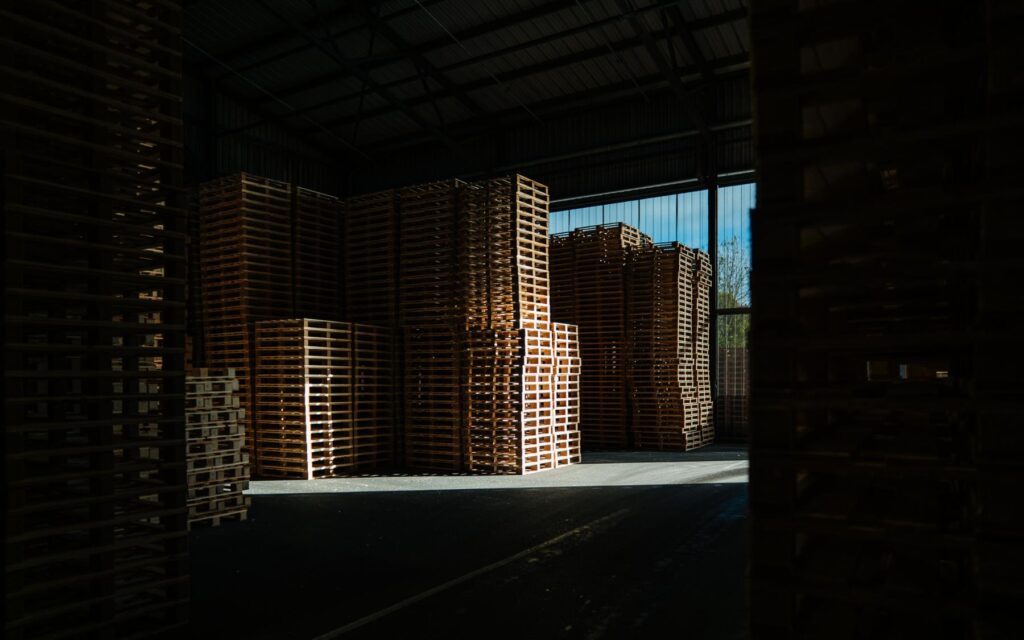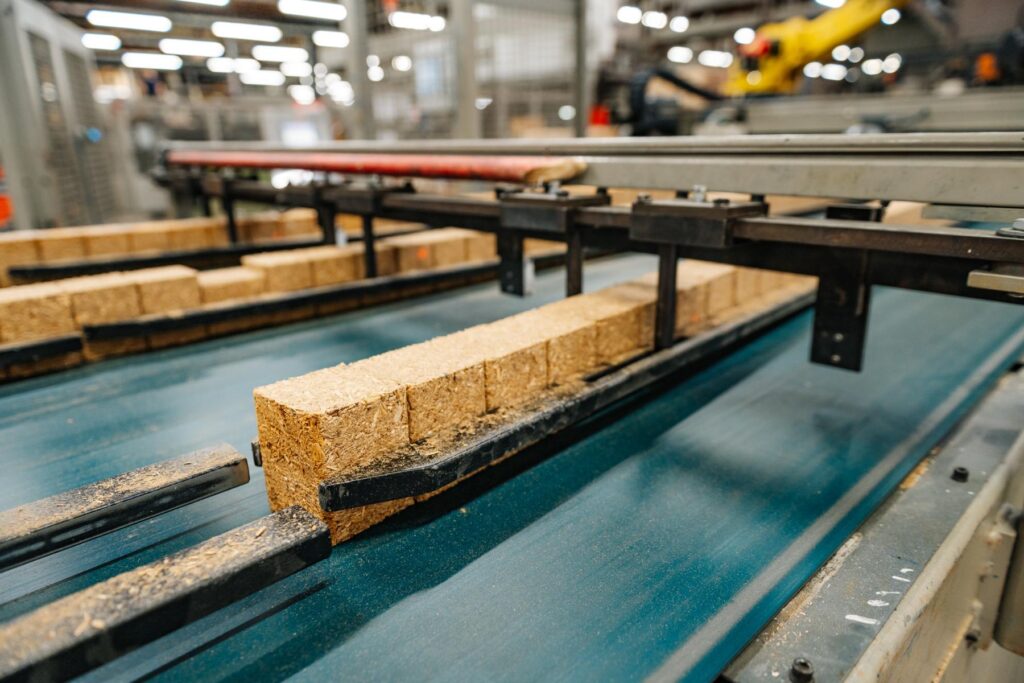The text below explains the most impactful current regulations set by the EU.

The European Union is setting the stage for a more sustainable, resource-efficient future with a series of regulations that directly impact industries that are reliant on natural materials. Specifically, the Proposed Packaging and Packaging Waste Regulation (PPWR), the Waste Framework Directive (WFD), the EU Deforestation Regulation (EUDR), and the EU Timber Regulation (EUTR) have significant implications for wooden pallets. These policies are reshaping how wooden pallets are sourced, used, and disposed of, with a strong focus on promoting sustainability, reducing waste, and ensuring traceability throughout their lifecycle. From sourcing wood sustainably to encouraging reuse and recycling, these regulations ensure that wooden pallets meet strict environmental standards. For pallet producers and users, staying informed and compliant with these frameworks is crucial for maintaining competitiveness in an eco-conscious market.
SPA members are fully compliant with all relevant EU regulations, including the PPWR, WFD, EUDR, and EUTR. With a strong commitment to environmental responsibility, the SPA members consistently adopt practices that surpass the minimum requirements, setting a higher standard for the industry. Our approach to responsible sourcing, recycling, and circular economy principles reflects our dedication to not just meeting legal obligations, but setting the bar for a more sustainable future in the global logistics sector.
The EU Timber Regulation (EUTR), implemented in 2013, aims to combat illegal logging and to promote the trade of legally harvested timber within the EU. It applies to all timber and timber products placed on the EU market, including wooden pallets. The regulation is part of the EU’s broader effort to address deforestation, biodiversity loss, and climate change by ensuring that timber supply chains are transparent, traceable, and sustainable.
1. Prohibition of Illegal Timber:
2. Due Diligence Obligation:
3. Regular Monitoring:
1. Sourcing and Compliance:
2. Traceability Requirements:
3. Increased Administrative Burden:
4. Market Differentiation:
5. Impact on Imports:
6. Penalties for Non-Compliance:

In summary, while the EUTR imposes strict obligations on wooden pallet producers, it also provides a framework for promoting sustainable and responsible business practices. By adopting robust due diligence systems and partnering with certified suppliers, producers can ensure compliance while enhancing their appeal in a market increasingly focused on sustainability.
The European Union Deforestation Regulation (EUDR) is a landmark initiative designed to combat global deforestation and forest degradation caused by the production and trade of certain commodities, including wood. Adopted in 2023, the regulation requires companies to ensure that products placed on the EU market are not linked to deforestation or forest degradation, directly or indirectly. It replaces the EU Timber Regulation (EUTR), introducing stricter measures to trace supply chains and enforce compliance.
1. Scope of Regulation:
2. Deforestation-Free Certification:
3. Due Diligence Requirements:
4. Geolocation Data:
5. Strict Penalties:
1. Sourcing Challenges:
2. Increased Traceability Requirements:
3. Supply Chain Complexity:
4. Potential Cost Increases:
5. Impact on Global Suppliers:

In summary, the EUDR presents a critical shift toward sustainable forestry practices, with profound implications for the wooden pallet industry. While compliance poses challenges, especially regarding supply chain transparency and costs, it also offers an opportunity for businesses to showcase their commitment to sustainability and gain a competitive advantage in an increasingly eco-conscious market. By investing in certified sourcing, traceability technologies, and repair and reuse systems, the wooden pallet sector can turn regulatory compliance into a strategic advantage.
The EU Waste Framework Directive (WFD) establishes the foundational legal framework for waste management across the European Union. Its primary objectives are to minimize waste generation, promote reuse and recycling, and protect the environment and human health. The directive plays a crucial role in advancing the EU’s transition to a circular economy by prioritizing resource efficiency and waste prevention.
1. Waste Hierarchy:
2. Extended Producer Responsibility (EPR):
3. Recycling Targets:
4. Circular Economy Integration:
1. Promotion of Reuse:
2. Increased Recycling Obligations:
3. End-of-Life Management:
4. Material Traceability:
5. Waste Prevention Opportunities:
6. Market for Secondary Materials:
7. Penalties for Non-Compliance:

In summary, the EU Waste Framework Directive directly supports the sustainable use and end-of-life management of wooden pallets. By emphasizing reuse, repair, and recycling, wooden pallet producers are well-positioned to align with WFD objectives and contribute to a circular economy. However, compliance requires proactive waste management strategies, enhanced traceability, and adherence to recycling and EPR requirements.
The Packaging and Packaging Waste Regulation (PPWR), introduced by the European Union, is part of the EU’s broader agenda to achieve a more sustainable and circular economy. It aims to significantly reduce packaging waste, promote reuse and recycling, and minimize environmental impact. The PPWR replaces the existing Packaging and Packaging Waste Directive (PPWD) with more stringent requirements and binding targets, impacting various industries, including the supply chain sector where wooden pallets are widely used.
1. Reduction of Waste Generation:
2. Reusable Packaging:
3. Recycling Targets:
4. Life Cycle Assessment:
1. Sustainability Alignment:
2. Pressure to Enhance Durability and Reusability:
3. Recycling Targets:
4. Standardization and Certification:
5. Costs and Operational Changes:
6. Competition from Alternative Materials:

For wooden pallets, this regulation emphasizes the importance of reuse, recycling, and reducing the environmental impact of packaging materials. It encourages businesses to adopt circular economy practices, ensuring that pallets are recycled or reused to the highest extent possible. By aligning with the PPWR, pallet producers can contribute to a more sustainable supply chain, reduce waste, and comply with stricter packaging standards, while also creating economic and environmental value.


Follow us
All rights reserved
© 2025 - S.P.A.
Sustainable Pallets Association gebruikt cookies om informatie over jouw bezoek te verzamelen en te analyseren. Lees meer.